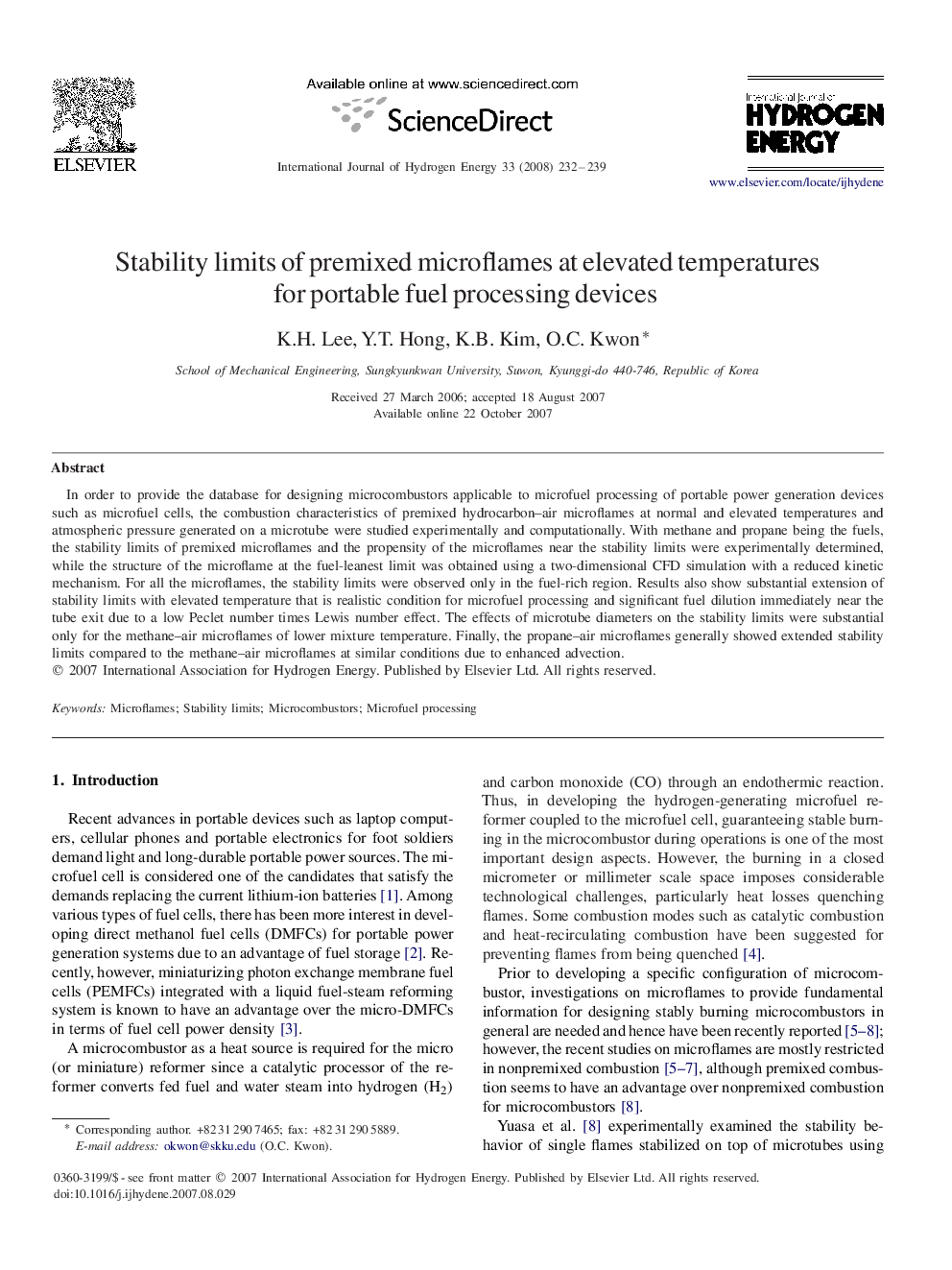| Article ID | Journal | Published Year | Pages | File Type |
|---|---|---|---|---|
| 1279456 | International Journal of Hydrogen Energy | 2008 | 8 Pages |
In order to provide the database for designing microcombustors applicable to microfuel processing of portable power generation devices such as microfuel cells, the combustion characteristics of premixed hydrocarbon–air microflames at normal and elevated temperatures and atmospheric pressure generated on a microtube were studied experimentally and computationally. With methane and propane being the fuels, the stability limits of premixed microflames and the propensity of the microflames near the stability limits were experimentally determined, while the structure of the microflame at the fuel-leanest limit was obtained using a two-dimensional CFD simulation with a reduced kinetic mechanism. For all the microflames, the stability limits were observed only in the fuel-rich region. Results also show substantial extension of stability limits with elevated temperature that is realistic condition for microfuel processing and significant fuel dilution immediately near the tube exit due to a low Peclet number times Lewis number effect. The effects of microtube diameters on the stability limits were substantial only for the methane–air microflames of lower mixture temperature. Finally, the propane–air microflames generally showed extended stability limits compared to the methane–air microflames at similar conditions due to enhanced advection.
